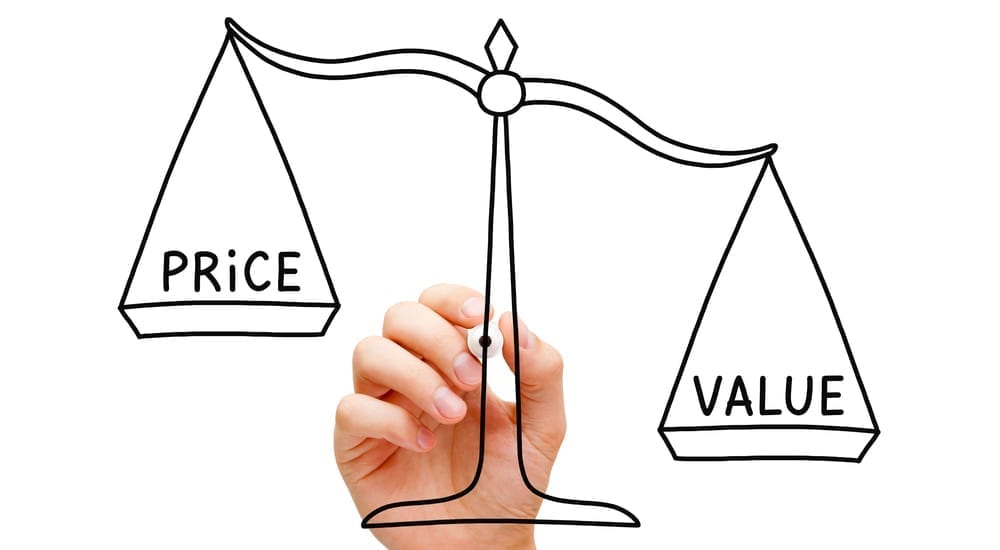Have you ever been surprised by the price of a used vehicle? It is a common experience to have sticker shock when you are first researching your used vehicle options. You may go into the process thinking that you’re going to save a lot of money by avoiding the cost of a new car. While this can happen, quite often the wide range of prices you will find in the used market can make it feel like it is too complicated and confusing to even consider a previously owned vehicle.
Rest assured that this is all normal when it comes to looking at a used car or truck. Vehicles with some history behind it will fluctuate in price for a variety of reasons. Even two cars of similar make and model can vary in price. Sometimes, the reason is simply that the different owners are trying different pricing strategies to either get the most amount of money or to sell the car quickly.
Thankfully, if you have your heart set on a used car, it is rather easy to understand the reasoning behind the prices you’re likely to encounter. In fact, while there are several different factors that influence the final price, there are a few strategies you can look for that will show you which vehicles are under or overpriced or right on target with the value.
The Ultimate Value of the Vehicle
Most people assume that the final price of a used vehicle will be what it is actually worth. It is important to realize this is often just a starting point for dealerships and private owners alike. Anyone who is selling a used vehicle is going to be looking for the most amount of profit they can make without going overboard. That means they have to go above the actual value of the vehicle in order to make any extra money.
Still, the value of the vehicle is a good starting point to think about when judging whether an option you are looking at is a good deal or not. The existing value will depend on the age of the vehicle, how well it has been maintained, and how much it has been driven. Basic numbers like the model year, mileage, and other specifications contribute to the base value you’re likely to find in something like the Kelly Blue Book. Unfortunately, these are often just a starting point for the value.
The particular vehicle itself will ultimately determine what that starting value will be. For example, two used vehicle options of the same make, model, and year can have drastically different price tags when you take into account their individual histories and overall conditions. The vehicle that is in better condition with a history free of major incidents and accidents will always be more expensive since it is considered to be of greater value.
The Final Price
Since the true value of a used vehicle is only the starting point, the extra amount you are likely to spend will determine the overall pricing strategy of the dealership or private seller. This strategy is going to reflect how much they need to sell the vehicle and how much they want to get from it. Sometimes, you can use this information to better negotiate the final price or ignore the potential vehicle altogether.
The trick is to compare the price tag with the value of the vehicle. The more expensive the final price tag is, the more the seller wants to make a profit. If it’s close or under the value, the seller likely wants to make a quick sale in order to move on. While these underpriced used vehicle options tend to be more preferable, they don’t come without their own risks.
Sometimes, the more expensive a used vehicle is, the better condition it is in. This means you’re less likely to end up with something that would require expensive repairs and maintenance at a later point. When you think about the future health of the vehicle, it may be worth a little extra cost upfront in order to save more money in the long run. Ultimately, the choice between an overpriced, healthier car and a more affordable, riskier purchase is yours to make.
What to Do With This Information
When you begin to analyze the relationship between value and final price, you get extra information to work with. How you use this information is key. Some smart thinking, research, and potential negotiation on your part would help you save more money in the long run.
First, think about what your ultimate budget is for a new vehicle. If you have a set limit, resist the urge to go above it at all cost. Even with attractive loan and leasing offers, the final price of the vehicle will determine how much extra you are paying in the long run. Any final price tag that goes above the budget shouldn’t be worth your time unless you have good reason for doing so.
Second, consider the potential for negotiation. If you feel like you can get a better deal through haggling, there may be certain indicators that help you determine your chance of success. The distance between the value and final price tag is one such indicator. The age of the vehicle, how long it has been on the market, and its overall condition will also give you potential points of negotiation.
The most important thing to remember is to take some time to consider all the different factors before making a purchase. It helps to wait a day or two to think about whether a potential option is a good price and in good condition. Regardless of the specifics, it should also be a model with the performance and features you need in your next vehicle.
If you take the time to assess anything and everything you can about a potential purchase, you will increase your confidence in the long run in addition to the chance of finding that perfect fit.


